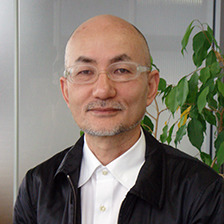Dentsu Design Talk, which began in 2005 and celebrates its 100th session this year. We will introduce digest versions of carefully selected content from past talk sessions, presenting one theme in two parts: a first and second installment.
(Planning & Production: Dentsu Inc. Human Resources Bureau, Aki Kanahara / Article Editing: Sugatsuke Office / Composition Support: Eiji Kobayashi)
<Part 1>
The first session we feature is the 79th talk (held March 21, 2012), themed "What Kind of Innovation Can Come from an Advertising Agency?" Guest speaker Dai Tamura, Director of Hakuhodo Innovation Lab and the University of Tokyo i.school, discussed the potential of advertising agencies through the lens of innovation. Executive Officer Kenji Shiroto served as the interviewer. *Both titles reflect positions held at the time.
First, Mr. Shiroto provided an overview of the advertising industry's evolution to date, explaining why innovation is now demanded of advertising agencies. He outlined the progression: the era of advertising power dominated by advertising departments until the early 1980s; the era of product power led by product planning departments in the late 1980s; and the era of IMC (Integrated Marketing Communication) from the 1990s onward, which required business divisions to possess comprehensive sales capabilities. The late 1990s marked the era of brand management, while the 2000s and beyond ushered in the era of corporate planning, strategic public relations, and social environmental capabilities. He reaffirmed how, as the times progressed, the areas demanded beyond advertising power gradually expanded. Drawing on his own experience, he stated that what is now required is how to aim for professionalism that transcends silos. He then introduced definitions for "marketing" and "idea": the former as "the creation of customers and all business activities from the customer's perspective" (Drucker), and the latter as "a creative process requiring practical knowledge, not merely a process of moving back and forth between tacit and explicit knowledge" (Ikujiro Nonaka). He then posed the question to Mr. Tamura: what does "innovation," the theme of this talk, actually mean?
Tamura defined modern innovation as "something that changes our perceptions, behaviors, values, and habits," contrasting it with the 20th century where technological breakthroughs themselves constituted innovation. He cited Apple's iPod as a prime example. When it debuted in 2001, none of its individual technologies were new, yet its profound innovation lay in transforming how people listened to music and their lifestyles. "How do we conceive of things that enrich our lives, things that didn't exist before?" To foster this kind of contemporary innovation, Tamura has recently been conducting research and developing talent based on ethnography, an anthropological technique.
The educational program at i.school, where Mr. Tamura has served as Director since 2009, has two key features. First, all programs incorporate three steps: "1. Understand, 2. Create, 3. Realize." While the emphasis varies by program, the 10-day workshop on "The Future of Games" featured in the video focused heavily on "1. Understand," dedicating all seven days except the final three to research. While existing design schools often start with "2. Create" and rarely include research in their curricula, i.school places equal importance on research. Another defining characteristic is deliberately placing the program "outside" the university. Its partnerships with cutting-edge companies, design firms, and universities span both domestic and international locations, and the educational program is operated entirely with external funding. Employees from sponsoring companies also participate in workshops alongside students, yielding positive results.
Within this educational framework, Tamura noticed something about the relationship between ideas and innovation. It's the question: "If an idea itself is good, does that automatically lead to innovation?"
[Continued in Part 2 ]





